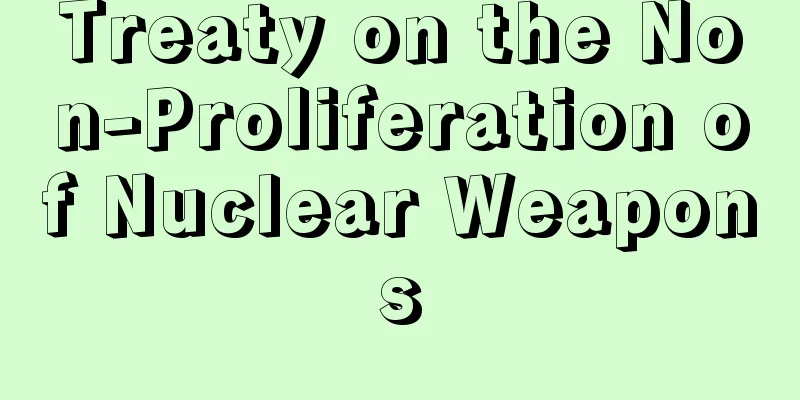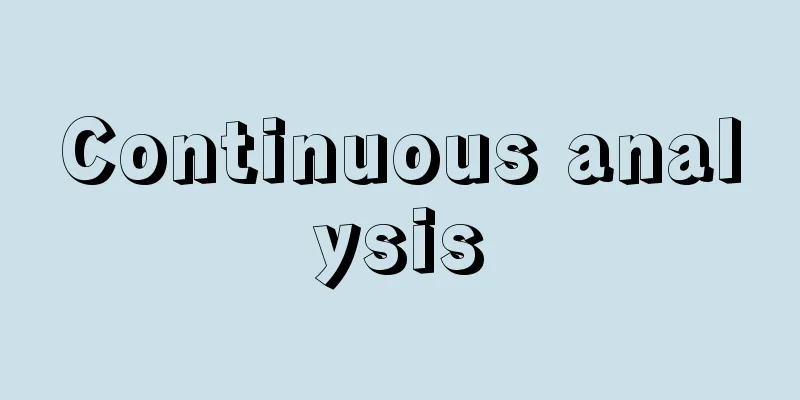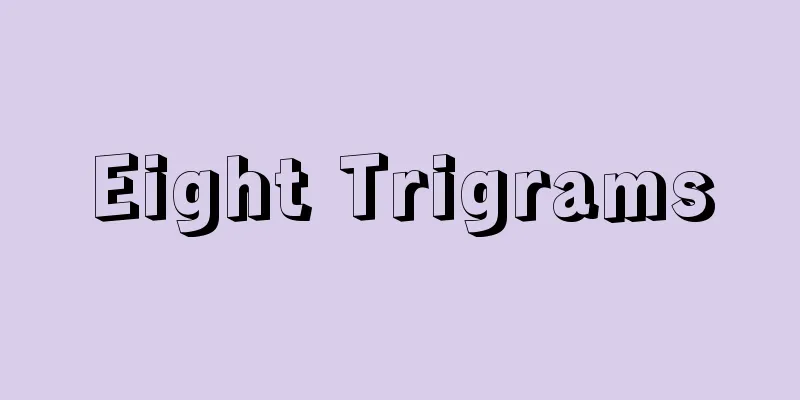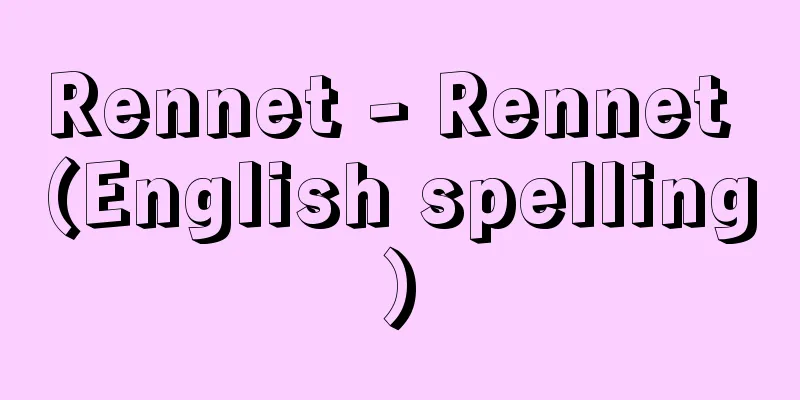Treaty on the Non-Proliferation of Nuclear Weapons

|
Officially, it is the Treaty on the Non-Proliferation of Nuclear Weapons. It is also known as the Nuclear Non-Proliferation Treaty. Its abbreviation is NPT. Following France's first nuclear test in 1960, China's test was expected, and there was also concern about nuclear proliferation to West Germany and other countries. As a result, the United States and the Soviet Union began to take up the treaty as a major issue in arms control around 1964-1965. A draft treaty was first prepared through negotiations between the United States and the Soviet Union, and negotiations were then held with non-nuclear weapon states, but no major amendments were made and a resolution recommending the treaty was adopted at a plenary session of the United Nations General Assembly on June 12, 1968. It came into force in March 1970, when the United States and the Soviet Union had completed their deposits of their instruments of ratification. As of June 2010, there are 190 member countries. This treaty defines the United States, the Soviet Union (Russia after the dissolution of the Soviet Union in 1991), the United Kingdom, France, and China as nuclear weapon states, and Article 1 stipulates that these nuclear weapon states shall not provide non-nuclear weapon states with nuclear weapons or other nuclear explosive devices, or assistance in their manufacture, Article 2 stipulates that non-nuclear weapon states shall not receive nuclear weapons or other nuclear explosive devices, or assistance in their manufacture, and Article 3 requires non-nuclear weapon states to enter into safeguards agreements, including inspections, with the International Atomic Energy Agency (IAEA) to ensure the fulfillment of their obligations. Article 4 stipulates that the peaceful use of nuclear energy is an inalienable right of the contracting states, and Article 6 stipulates that the contracting states shall negotiate in good faith toward a nuclear disarmament treaty. The main aim of this treaty is to prevent so-called "horizontal nuclear proliferation" (an increase in the number of nuclear weapon states) as stated in Article 2. In this sense, during the Cold War, this treaty was characterized as the legal framework of the US-Soviet system. Since its entry into force in 1975, the Treaty has been held every five years as a review conference (originally called a "review conference," but since around 2000, this name has been adopted). The main focus of these conferences is the conflict between non-nuclear weapon states, which are obligated to prohibit "horizontal nuclear proliferation," and nuclear weapon states, which continue "vertical nuclear proliferation" (strengthening of nuclear armaments). Non-aligned countries, which are increasingly dissatisfied with the delay in nuclear disarmament as stipulated in Article 6, have been in sharp conflict with nuclear weapon states at each conference, insisting on linking vertical and horizontal non-proliferation measures, but during the Cold War, they were unable to obtain any concessions from the nuclear weapon states. As the Cold War came to an end, the direction of nuclear disarmament was apparent with the Treaty on the Elimination of Intermediate-Range Nuclear Forces (1987) and the First Strategic Arms Reduction Treaty (START-I, signed in 1991), and countries such as Argentina and South Africa, which were concerned about proliferation, as well as France and China, which had not joined due to their dislike of US-Soviet domination, joined, and the NPT regime seemed to have been strengthened. However, after the end of the Cold War, the treaty faced new challenges. Inspections after the Gulf War (1991) revealed that Iraq, a member of the NPT, was developing nuclear weapons. Soon after, suspicions of nuclear development in North Korea also arose, and there were fears that Libya, Iran, Syria and others would follow suit. The United States and other major countries moved to strengthen the NPT regime, and at the 1995 Review and Extension Conference, when the treaty's deadline expired, the NPT was extended indefinitely. In order to strengthen the safeguards system to prevent the diversion of nuclear materials to military uses, a model additional protocol (INFCIRC/540, 1997) was also created (as of January 2009, 88 countries are members), which expanded IAEA inspections to undeclared facilities that do not handle nuclear materials and made it possible to collect isotopes released during nuclear activities (environmental sampling). However, it is difficult to deal with countries that decide to develop nuclear weapons by simply strengthening the NPT. Since the Gulf War, UN inspections have been conducted in Iraq to prevent the development of weapons of mass destruction. In 2003, the United States led a coalition of the willing to invade Iraq, citing Iraq's failure to cooperate with the inspections, and toppled the Saddam Hussein regime. Regarding the North Korean issue, the US-North Korea talks were held in 1993, and the US-China-North Korea talks were held in 2003, leading to the establishment of the Six-Party Talks, which included Japan, South Korea, and Russia. In August 2002, Iran's uranium enrichment was exposed, and a framework was established for six countries (the P5, the permanent members of the Security Council, plus Germany) including the United States and Russia when Security Council sanctions were considered in 2006. The response shifted to individual negotiation frameworks and the UN Security Council. However, the Security Council sanctions are groundbreaking in that they impose obligations on Iran that go beyond the NPT (abandoning uranium enrichment), but they have not been able to put a stop to Iran's enrichment activities, which it claims are for peaceful purposes under Article 4 of the NPT. North Korea also declared its withdrawal from the NPT in 2003 and conducted nuclear tests in 2006 and 2009. Another big challenge was the nuclear tests conducted in 1998 by India, which was not a member of the NPT, and Pakistan, which was a counter-party to the NPT. Although the NPT cannot deal with non-members, this event shook the foundation of the NPT, which defines five countries as nuclear weapon states. The international community, which initially criticized and imposed sanctions, changed its attitude after the September 11 terrorist attacks in the United States and the war in Afghanistan. The United States agreed to apply IAEA safeguards to India's peaceful uses of nuclear energy, and in 2008 concluded a nuclear cooperation agreement with India. Since then, Russia, France, Canada, Kazakhstan, and South Korea have followed suit, and Japan has also established a working group for nuclear cooperation, and a trend is emerging to recognize India as a de facto nuclear weapon state. In response, in June 2010, China announced that it would export two nuclear reactors to Pakistan. Although the Nuclear Suppliers Group (NSG) is opposed, it is difficult to create a logic for selecting India and Pakistan, and in the long term, this issue will also have a serious impact on the nuclear non-proliferation regime. Under such severe challenges, the eighth review conference was held in May 2010. The previous conference in 2005 was plagued by difficulties with procedural issues, and the US Bush administration, while showing no enthusiasm for nuclear disarmament, insisted on a ban on new acquisitions of uranium enrichment and plutonium reprocessing facilities and technologies, which drew backlash from non-nuclear weapon states, and the conference failed to adopt a final document. This time, there was a sense of crisis. Following the "nuclear-free world" speech (April 2009), the Obama administration signed the New Strategic Arms Reduction Treaty (New START Treaty, April 2010) with the US and Russia, and announced its intention to reduce nuclear forces and reduce their role (Nuclear Posture Review (NPR) April 2010), and came to the conference fully prepared. Attention was paid to the document prepared by the chair regarding the review of the treaty's operation, and the action plan was adopted, saving the NPT regime, which was in crisis, for the time being. The Action Plan includes the reaffirmation of the "unambiguous commitment" to nuclear abolition (2000 Final Document), the nuclear-weapon states to consider nuclear disarmament measures and report to the preparatory meeting for the Review Conference in 2014, the encouragement of the states parties to join the Additional Protocol, and support for the holding of an international conference to establish a Middle East zone free of weapons of mass destruction in 2012. However, this puts off difficult issues, and it cannot be said that progress has been made in strengthening the nuclear non-proliferation regime. The trends over the 20 years since the end of the Cold War show that the environment has changed dramatically since the treaty was created, and we have entered an era in which, while maintaining the NPT regime, we must rely on a multifaceted complementary regime, such as diplomatic frameworks outside the regime, crisis management regimes, regional regimes, and the use of the Security Council. [Nakae Masatsugu] "The International Politics of Non-Proliferation of Weapons of Mass Destruction" edited by Masatsugu Noka and Tetsuya Umemoto (2000, Yushindo Kobunsha) " "The Law and Politics of Nuclear Disarmament and Non-Proliferation" edited by Masahiko Asada and Hiroshi Tosaki (2008, Shinzansha Publishing) " "The Logic of Nuclear Proliferation" by Shuichiro Iwata (2010, Keiso Shobo) [References] | | | | | | | | |Source: Shogakukan Encyclopedia Nipponica About Encyclopedia Nipponica Information | Legend |
|
正式には「核兵器の不拡散に関する条約」。核拡散防止条約ともいう。略称NPT。1960年のフランスの最初の核実験に続いて中国の実験も予想されるようになり、さらに西ドイツなどへの核拡散も懸念されたため、アメリカ、ソ連が1964~1965年ごろから軍備管理の主要課題として取り上げ始めた。最初に米ソ交渉によって条約草案を作成し、その後非核兵器国との交渉を行ったが、大きな修正はないまま、1968年6月12日国連総会本会議でこの条約の推奨決議が採択された。米ソの批准書寄託が完了した1970年3月に発効した。加盟国は2010年6月時点で、190か国。 この条約は、アメリカ、ソ連(1991年のソ連解体後はロシア)、イギリス、フランス、中国を核兵器国と規定し、第1条で、これら核兵器国が非核兵器国に核兵器、その他の核爆発装置、その管理、あるいはその製造の援助を与えないこと、第2条で、非核兵器国が核兵器、その他の核爆発装置、その管理の受領、あるいはその製造について援助を受けてはならないこと、第3条で非核兵器国が義務の履行を確実にするため国際原子力機関(IAEA)と査察を含む保障措置協定を結ぶことを義務づけている。第4条は締約国の原子力平和利用が奪いえない権利であること、また第6条では締約国が核軍縮条約に向けて誠実に交渉を行うことを規定する。この条約の主たるねらいは第2条のいわゆる「横の核拡散」(核兵器国の増加)防止にある。この意味で冷戦時代にはこの条約は米ソ体制の法的な枠組みと性格づけられた。発効後5年ごと(1975年~)に条約の運用検討会議(当初は「再検討会議」とよばれたが、2000年前後からこの呼称が一般化)が開催されている。この会議の大きな焦点は「横の核拡散」禁止の義務を負う非核兵器国と、「縦の核拡散」(核軍備の増強)を続ける核兵器国の対立である。第6条に規定される核軍縮の遅れに不満を強める非同盟諸国などは、縦・横の拡散防止措置を連動させることを主張して毎回核兵器国と鋭く対立したが、冷戦期には核兵器国の譲歩はほとんど得られなかった。冷戦の終結期になり中距離核戦力全廃条約(1987)、第一次戦略兵器削減条約(START‐Ⅰ、1991年調印)など核軍縮の方向が見えたこと、並行して拡散が懸念されていたアルゼンチン、南アフリカ共和国などのほか、米ソ支配を嫌って未加盟だったフランス、中国も加盟し、NPT体制は強化されたかにみえた。 しかし冷戦終結後この条約は新たな挑戦を受けた。湾岸戦争(1991)後の査察でNPT加盟国であるイラクの核開発が発覚した。直後に北朝鮮の核開発疑惑も浮上し、さらにリビア、イラン、シリアなどが続くことが懸念されたのである。アメリカはじめ主要国はNPT体制の強化に動き、条約期限満了を迎えた1995年の運用検討・延長会議でNPTは無期限延長された。軍事転用防止の保障措置体制を強化するため、IAEA査察を核物質を扱わない未申告施設などに拡大し、核活動に伴う放出同位元素採取(環境サンプリング)などを可能にするモデル追加議定書(INFCIRC/540、1997年)も作成された(2009年1月、88か国加盟)。しかし決意して核開発に踏み出す国家にはNPT強化で対処することはむずかしい。湾岸戦争以来大量破壊兵器開発を阻止する国連査察が続いたイラクでは、査察への非協力を一つの理由に2003年、アメリカ中心の有志連合軍が進攻、サダム・フセイン政権を倒した。北朝鮮問題では1993年に米朝協議、2003年に米中朝協議を経て日本、韓国、ロシアを加えた六者会合の場が設けられた。また2002年8月にウラン濃縮が暴露されたイランに対してはイギリス、フランス、ドイツ(EU3)、ついで2006年安全保障理事会制裁が検討される段階からはアメリカ、ロシアを加えた6か国(安全保障理事会常任理事国P5+ドイツ)の枠組みが設けられ、対応は個別の交渉枠組みと国連安保理へと移った。しかし安保理による制裁はNPTを超える義務(ウラン濃縮放棄)をイランに負わせる画期的なものであるが、NPT第4条に基づいて平和利用を主張するイランの濃縮活動に歯止めをかけることはできていない。北朝鮮も2003年にNPT脱退を宣言、2006年、2009年には核実験を行った。 もう一つの大きな挑戦は、1998年にNPT未加盟のインドとこれに対抗するパキスタンが核実験を行ったことである。未加盟国にNPTで対処することはできないが、5か国を核兵器国と規定するNPTの基盤を揺るがすできごとではあった。当初は非難し制裁を課した国際社会は、アメリカにおける「9・11同時多発テロ」、アフガニスタン戦争の後には態度を変え、アメリカはインドの平和利用分野にIAEA保障措置を適用するとしたうえで、2008年にインドと原子力協力協定を締結した。それ以降ロシア、フランス、カナダ、カザフスタン、韓国が続き、さらに日本も原子力協力のための作業グループを立ち上げ、インドを事実上の核兵器国として認知する流れができつつある。これに対し2010年6月、中国はパキスタンに2基の原子炉を輸出することを明らかにした。原子力供給国グループ(NSG)が反対しているとはいえ、印パ選別の論理をつくるのはむずかしく、長期的にはこの問題も核不拡散体制に深刻な影響を与えるであろう。 このような厳しい挑戦の下で、2010年5月に8回目の運用検討会議が開かれた。前回2005年には手続問題に手間どったうえ、アメリカのブッシュ政権が核軍縮には意欲をみせない一方でウラン濃縮・プルトニウム再処理施設・技術の新規取得禁止などを主張して非核兵器国の反発を買い、最終文書を採択できなかったため今回は危機感があった。オバマ政権は「核なき世界」演説(2009年4月)に続き、アメリカ、ロシアの新戦略兵器削減条約調印(新START条約、2010年4月)、核戦力の削減と役割低下の姿勢を表明(核戦力態勢見直し(NPR)2010年4月)、準備を整え会議に臨んだ。条約の運用検討については議長作成の文書に留意がなされ、行動計画が採択されたことで危機にあるNPT体制はひとまず救われた。行動計画には、核廃絶の「明確な約束」(2000年最終文書)の再確認、核兵器国は核軍縮措置を検討し2014年の運用検討会議準備会合に報告、締約国には追加議定書への加盟の奨励、また2012年に中東非大量破壊兵器地帯設置の国際会議を開催することへの支持、などが盛り込まれた。しかし困難な問題を先送りしており、核不拡散体制強化に進展があったとはいえない。冷戦後20年間の動向は、時代環境が条約作成時とはさま変わりし、核不拡散問題はNPT体制を維持しながら、制度外での外交枠組み、危機管理体制、地域的な制度、安全保障理事会の活用、など多元的な補完体制に依存せざるをえない時代を迎えたことを示している。 [納家政嗣] 『納家政嗣・梅本哲也編『大量破壊兵器不拡散の国際政治学』(2000・有信堂高文社)』▽『浅田正彦・戸崎洋史編『核軍縮不拡散の法と政治』(2008・信山社出版)』▽『岩田修一郎著『核拡散の論理』(2010・勁草書房)』 [参照項目] | | | | | | | | |出典 小学館 日本大百科全書(ニッポニカ)日本大百科全書(ニッポニカ)について 情報 | 凡例 |
Recommend
SNCM material - SNCM material
...steel used for functional parts of machines th...
retroflex
…lip [lp]〈lips〉. (c) retroflex: Turn the tip of t...
Meeting group - Egoshu
From the late Muromachi period to the early moder...
Megalithic culture
A Neolithic culture characterized by megalithic st...
Stable Index Price System
…Imports of the items in question are also contro...
Hopfer, D.
In 16th century Germany and Flanders, the stylist...
four-oared shell with coxswain
… [Kikuo Hirose]. … *Some of the terminology that...
Mohist - Bokuka
A school in the classification of academic subjec...
Pharyngeal syphilis
...In most cases, it is a secondary infection fro...
Geoje Island
The second largest island in Korea (Republic of K...
Innkeeper's Wealth
A classic Rakugo piece. A story from Osaka. It was...
Sardine oil (Iwashiyu)
One of the most well-known fish oils. Sardines are...
Bread Association - Pan no Kai
This was a gathering of young writers who advocat...
Upper rice - Agemai
In the Edo period, due to financial difficulties,...
Heliogabalus
…However, he indulged in extravagance and disrega...









